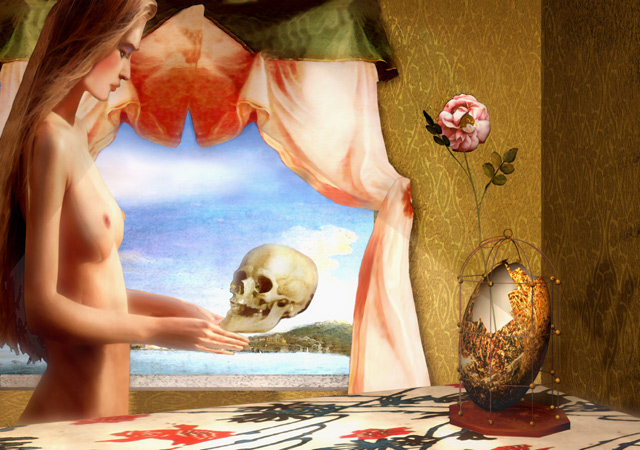"Vanitas"
Nella tradizione classica spesso alla natura morta è associato il motivo della vanitas - "vanitas vanitatum"- che ha la funzione di temperare la facoltà che l'arte possiede di perpetuare il godimento sensuale, ma a ben guardare tale motivo non ha ragion d'essere perché ogni natura morta ha in sé implicito il motivo della vanità. Lo spettatore che cercasse di afferrare il frutto succulento s'imbatterebbe in una superficie dura e fredda, più è riuscita l'illusione e più sarà efficace il monito implicito tra sembianza e realtà.
"Vanitas"
Vanitas or observing the ever-changing, impermanent nature of all phenomena.
The observation of the impermanent nature of all phenomena is a characteristic common to Dharma, the teaching of the Buddha, as well as to a genre of still-life called Vanitas, in the Renaissance.
In Vanitas the idea of ephemeral nature of phenomena is expressed through the use of domestic objects to which a symbolic connotation is given.
The presence of a skull in a still life is an indication of memento mori, the reminder that we all are bound to die.
The cage with an oversized golden-egg used as a flower pot speaks of the Human condition...
